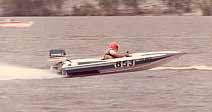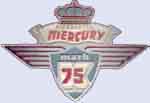Agreed on what Gerr's book is about and I was only offering it to provide some basic info for prop theory and agreed that surfacing props are difficult to understand and predict performance. But I have found my rather simple relations have proved to be very useful in setting up my hydro.
As far as the lift/drag theory of wings, props and sails by nonintuitive I would add that for sails there is another theory out there. Since a sail is a thin cambered sheet when properly set in the wind there is no relative difference in cambered shape of the front and the back face like there is with a wing and prop blade. Therefore the usual wing theory of lift by pressure difference from the lower pressure on the greater curved side than the flatter does not totally apply to a sail. A more reasonable explaination results from the sail simply changes the direction of the air from the leading edge to trailing edge that passes around it and that deflection constitutes a force from Newton's F=ma. The angle that the air enters the sail is different than when it leaves at the trailing edge thus resulting in sail force. Therefore for sails the greater the deflection the greater the force (within limits of course). No doubt that shedding eddies has some contribution as well as other items. If interested here is a fairly good explaination of the theory:
Prelude
http://www.sailtheory.com/wrongtheory.html
Theory
http://www.sailtheory.com/sail.html

 Thanks:
Thanks:  Likes:
Likes: 




 Reply With Quote
Reply With Quote




Bookmarks